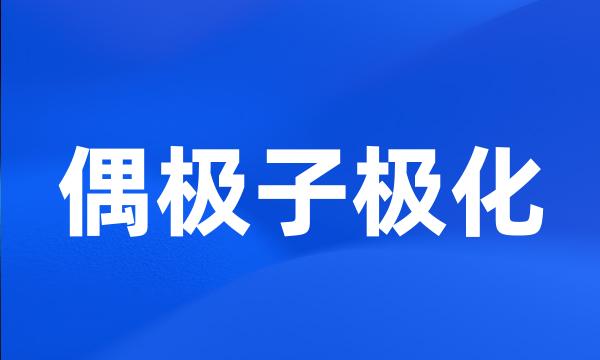偶极子极化
- 网络dipole polarization;dipole prolarization
 偶极子极化
偶极子极化-
PTO/NFO复相陶瓷介电行为符合Hybrid介电模型,其介电常数的大幅度提高是空间电荷极化和偶极子极化共同作用的结果,同时满足微电容模型。
The dielectric behavor fits Hybrid dielectric model , which is caused by space charge polarization and dipole polarization and fit micro-capacitance model .
-
有机玻璃全去偶极子极化现象研究
Study on phenomena of " whole dipole - depolarization " of PMMA
-
提出一种新的概念&偶极子去极化程度和计算式来量化研究聚甲基丙烯酸甲酯(PMMA)在加速热氧老化过程中其相对电容率急剧下降这一现象。
A novel concept called " degree of dipole depolarization " and its calculational formula were proposed to deal with the sharp reduction of relative permittivity of PMMA during accelerated thermally aging .
-
皮革材料偶极子转向极化的理论研究
Theoretic study on orientation polarization of electric dipoles about leather
-
自由空间中偶极子云团极化散射特性研究:相干散射模型
Study on polarization scattering characteristics of chaff cloud in outer space : coherent scattering model
-
聚甲基丙烯酸甲酯的偶极子去极化程度研究
Study on Dipole Depolarization Degree for PMMA
-
在所研究的工艺与配方中,交联剂质量份数为6%的试样的偶极子去极化程度达到75%。
A sample with 6 % of cross-linking agent had a degree of dipole depolarization of 75 % .
-
主要介质极化机理归因于偶极子松弛极化,掺杂延迟了松弛时间,使得频响特性明显。
Dipoles relaxation polarization was the main polarization mechanism . Ionic doping extended the relaxation time , resulting in more obvious frequency dispersion .
-
证明机电稳定性和突跳稳定性是明显的受到聚合物拉伸极限和偶极子的极化饱和影响。
It is proved that the electromechanical stability and snap-through stability can dramatically influenced by the polymers ' stretch limits and dipoles ' polarization saturation .
-
研究发现:链转移剂和测试频率对偶极子去极化程度基本没有影响,后固化工艺能减小试样的偶极子去极化程度,内增塑剂和交联剂都能增大试样的偶极子去极化程度。
It was showed that post-curing may increase , plasticization and cross-linking may decrease the depolarization , while transfer agent and testing frequency had no effect .
-
分析表明:在木材的四种极化现象中偶极子取向极化的热效应是介质损耗的主要方面。
The result shows that the heat effect of dipole orientation polarization is the principal aspect of the medium loss in the four kinds of polarization phenomena of timbers .
-
这时偶极子的取向是极化带电的主要贡献者。
The orientational polarization of dipole is major contributions in the polarization charging .
